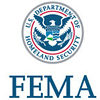Campaign: Topic 2: Understanding and Communicating Risk Exposure and Costs
Structures built above base Flood elevation reduce insurance
Any house that is in a VE zone that is built above the required base flood elevation should not have to pay outragious FEMA charges, and should pay only as in an AE zone. If the house is built to code and meets the requirements outlined by FEMA, why are they considered at a huge risk? I do not mind having to pay something towards FEMA insurance, but not the high amount of $15,000 they have earmarked for my home. I can ...more »
